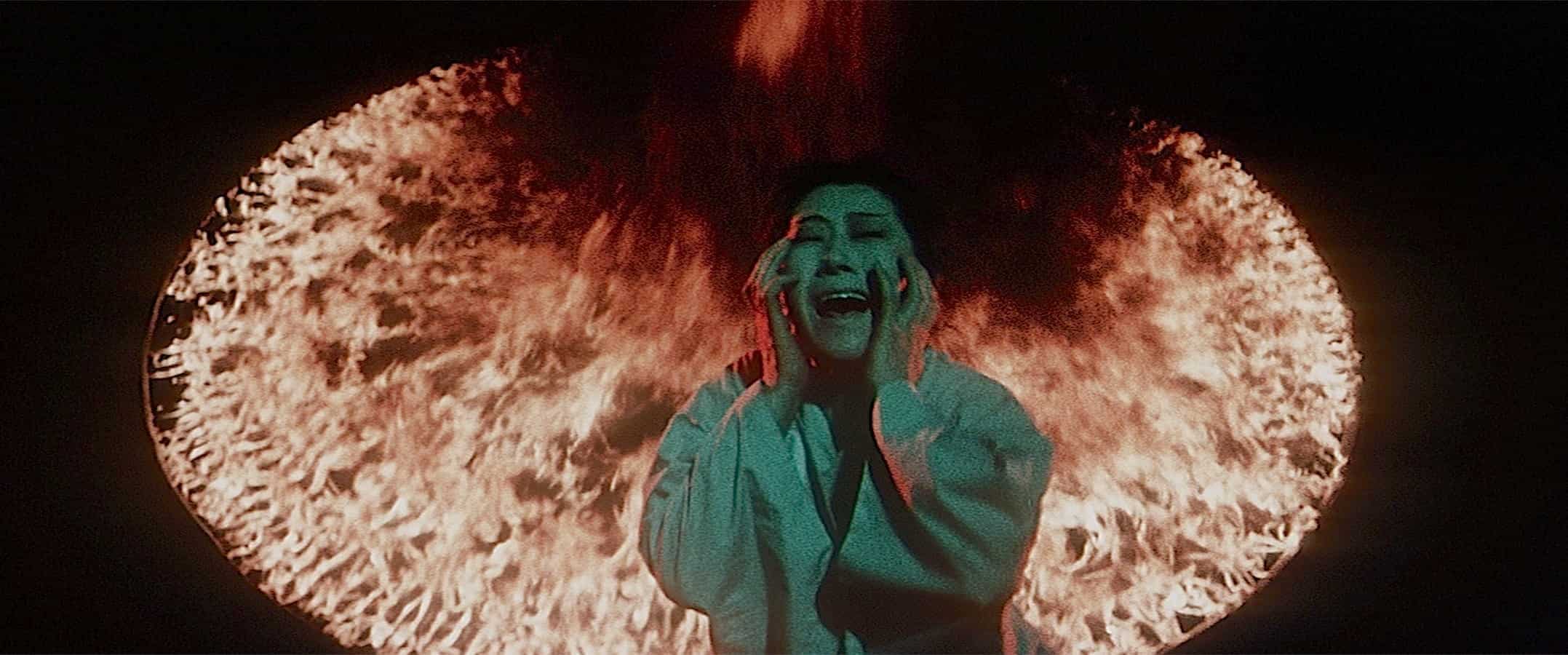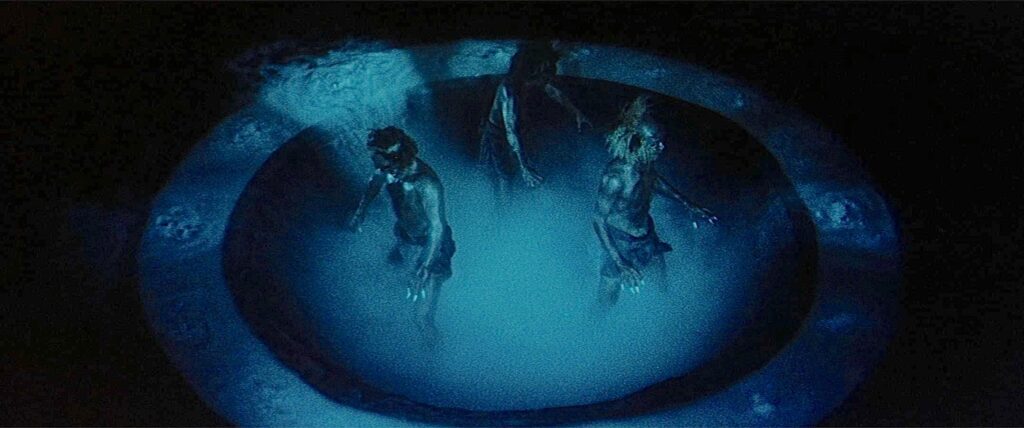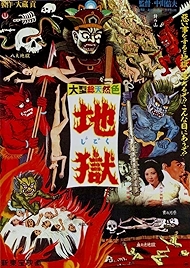Big in Japan and inhabiting a “cult” niche in much of the rest of the world, 1960’s Jigoku is also known as Hell or The Sinners of Hell and does pretty much as advertised. It’s a portrait of Hell, its sinners, and what happens to wrongdoers down below after bad lives lived up top.
Director and co-writer Nobuo Nakagawa does it as a tale told in two halves. In part one he tells the story of Shirô (Shigeru Amachi), a decent sort of guy, a student who, led astray by his friend Tamura (Yôichi Numata), one night knocks down and kills an innocent bystander, Kyôichi, a death that sets off a long chain of revenge and retribution.
A portrait of hell on earth is what Nakagawa gives us, with Shirô being pursued by the vengeful mother and girlfriend of the dead man, while around him everything else seems to start going to hell in a handcart, with a pile-on of terrible things happening to his girlfriend (Utako Mitsuya, who plays another role later on), her parents, his sick mother and her wayward husband, the denizens of the retirement community where they live and so on.
In Jigoku everyone on screens turns out to be morally bereft. If it’s a cop then he’s bent. If a doctor he doesn’t give a toss about his patients. The guy who runs the retirement community is bilking the residents. The servant meant to be helping Shirô’s parents is in fact sleeping with his dad, while also making eyes at the son, or anything in trousers. If a fisherman goes fishing he’ll come back with poisoned fish he found dead in the river. Someone will eat them; old people don’t matter either way.
Tamura pops up here and there, literally materialising out of nowhere sometimes and often dressed in red. He wears shades, dresses and behaves like a hipster and might well be the devil himself – Nakagawa has a message about foreign pollution of Japanese morality.
It is a grim picture. And then, as if to say “you think that’s bad?”, Nakagawa shifts the action to hell, where we meet again all the people we met while they were alive, except this time they are getting their just deserts – being boiled alive, roasted in lakes of fire, being speared by gigantic demons. One man is sawn in half, agonisingly slowly.
Realism has come second to a more poetic style of film-making from the start but in hell Nakagawa really goes to town on the distorted sound, unsettling edits, lurid shifts in colour from near-monochrome to full-bore lush, while the sounddtrack of drums, crashing cymbals and what might be a theremin or possibly a musical saw warbles away in an unsettling fashion. There’s no solid ground down here in hell and there wasn’t much up in the mortal world either.
Dante’s circles of hell spring to mind but what’s really impressive about it is Nakagawa’s singularity of purpose and his ability to conjure stark and powerful images from a non-existent budget. The Shintoho studio that made Jigoku literally went bust mid-production and there are many stories of the cast helping the crew build the sets so the shoot could be completed.
Quite honestly, it’s a bit too long and a trim either of the first or second half would tighten up some of the redundancy in the storytelling. But it’s undeniably impressive, has style to spare and has inspired two remakes in Japan, one by “pink film” director Tatsumi Kumashiro (in 1979) and another, looser adaptation by Teruo Ishii (in 1999). Not for nothing is Nobuo Nakagawa known as the father of Japanese horror.
Jigoku – Watch it/buy it at Amazon
I am an Amazon affiliate
© Steve Morrissey 2023


